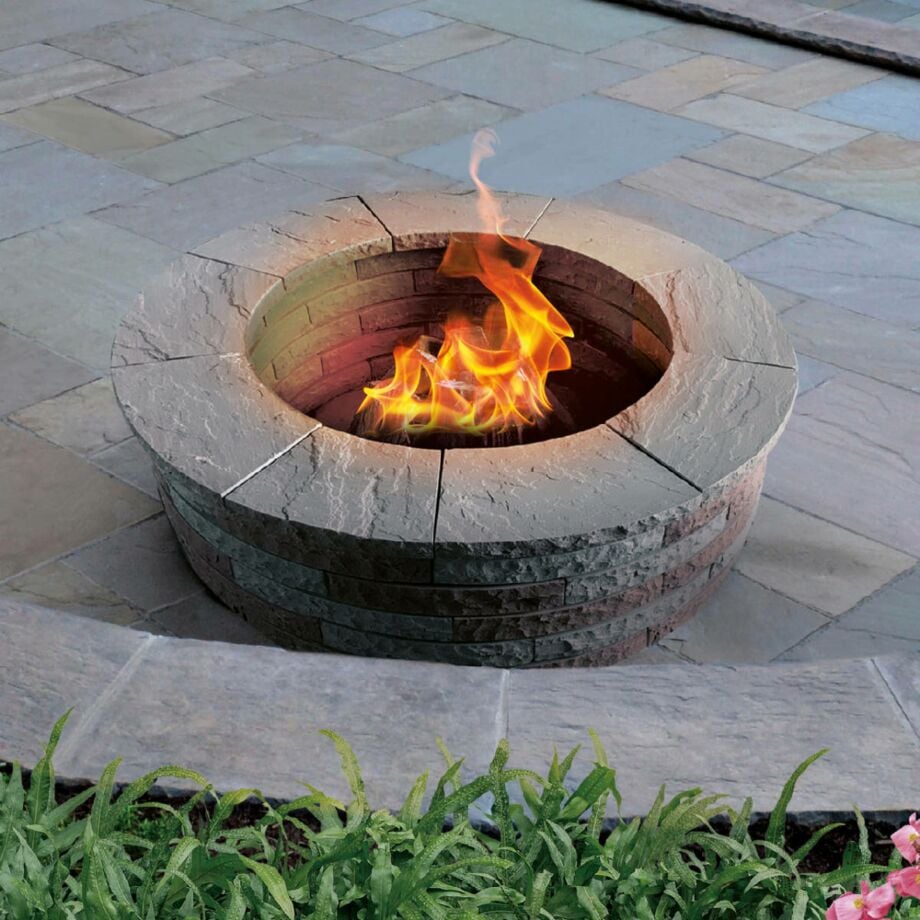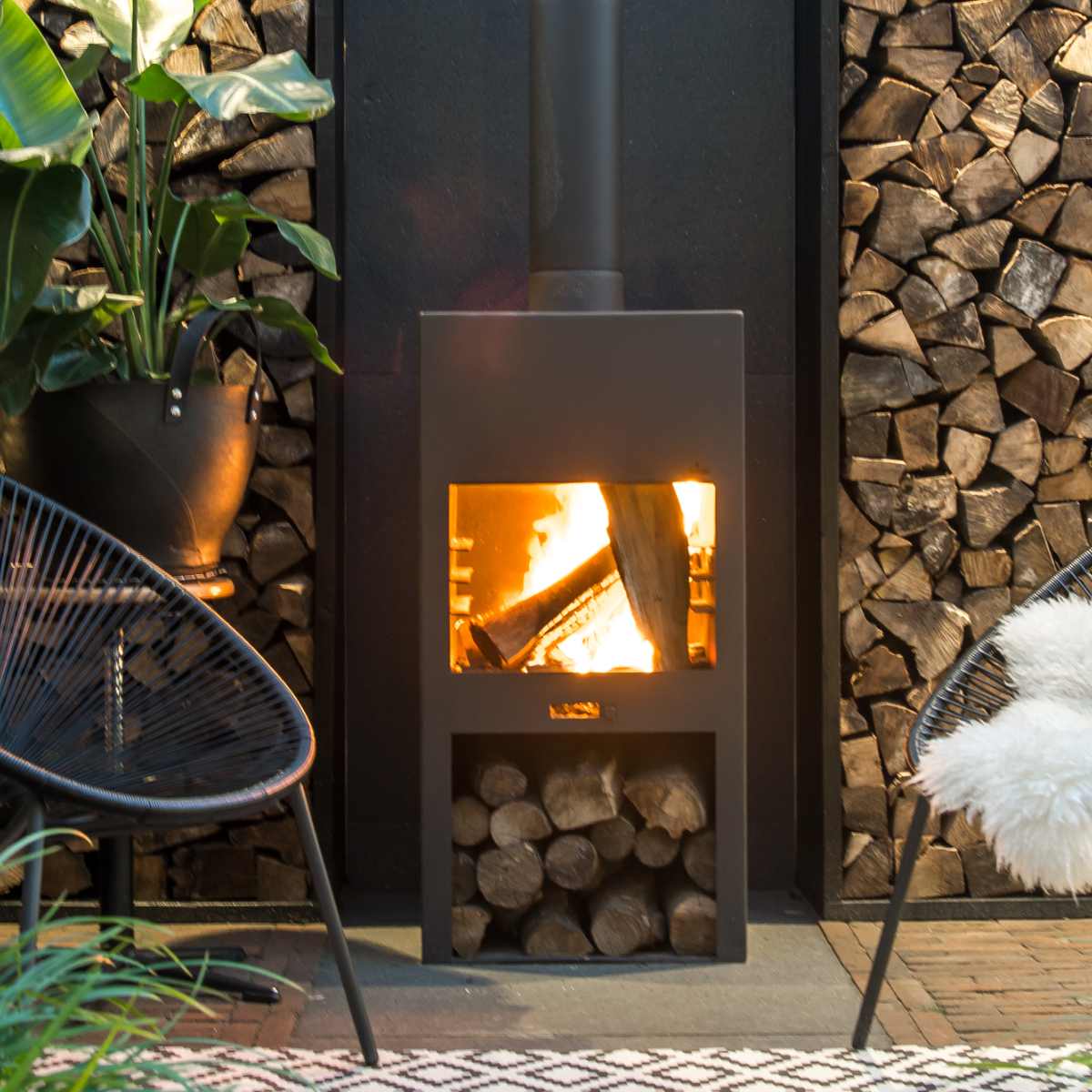
Fires are absolutely brilliant at creating a warm atmosphere (both physically and psychologically)! They are not only an impressive focal point for the garden, but they are also the natural gathering place of social meetings. So, whether you’re toasting marshmallows with the kids, having a romantic night in for two or you’re hosting a party, they really are a game changer.
Just imagine, sitting around a toasty fire on a crisp evening with friends and family over a mug of hot chocolate… Bliss!
Like water features, garden fires are a valuable feature within your garden as they provide many benefits including:
-
Warmth: Garden fires can provide warmth on chilly evenings, making them a great option for year-round use.
-
Ambiance: Garden fires create a cozy and relaxing atmosphere that is perfect for outdoor gatherings with family and friends.
-
Cooking: Garden fires can be used for cooking, such as roasting marshmallows or cooking hot dogs, making them a versatile option for outdoor activities.
-
Waste reduction: Burning garden waste, such as leaves and branches, in a controlled and safe manner can help reduce waste and provide a more eco-friendly option for disposal.
-
Extending the seasons: The warmth of. afire enables you to enjoy your garden throughout the seasons, from cooler summer evenings, to creating a hub on bonfire night.
Types of garden pits and bowls
Stone Built Fire Pit
A stone-built fire pit is a fire pit made from natural stones, typically assembled in a circular or square shape. The stones are often dry-stacked or cemented together with mortar to create a sturdy and permanent structure.
Stone-built fire pits can be constructed in various sizes and designs, depending on personal preferences and the available space. Some stone-built fire pits feature a raised hearth, while others are dug into the ground. Some are also equipped with grates for cooking or screens to contain the flames and embers.
Stone is a popular material for building fire pits because it is durable, heat-resistant, and aesthetically pleasing. Stone-built fire pits can be a great addition to outdoor living spaces, providing a functional and attractive centerpiece for outdoor gatherings. However, it's important to note that building a stone fire pit requires some knowledge of construction and masonry, and it's essential to follow all safety guidelines and regulations when using it.
Features:
- Permanent feature
- Typically emits more heat than bowls
- Doubles up as a summer grill/BBQ
- Provides ambiance
Fire Bowl or log burner
A fire bowl is a type of outdoor fire feature that consists of a bowl-shaped container designed to hold and contain a fire. Fire bowls can be made of various materials such as metal including corten steel and mild steel, ceramic, or stone, and are typically designed to sit on a flat surface such as a patio, deck, or outdoor table. Log burners have the appearance of a traditional fireplace, but offer the same functionaility as a fire bowl.
Fire bowls and log burners can burn wood, or charcoal and can be used for heating, cooking, or creating ambiance in an outdoor space. Some fire bowls and log burners come with a built-in grate for cooking, while others are simply used for burning wood or charcoal.
Fire bowls and log burners can be an excellent option for outdoor entertaining, providing a cosy and inviting atmosphere for gatherings with family and friends. They can also be portable and easy to move, making them a versatile addition to outdoor living spaces. However, it's important to follow all safety guidelines and regulations when using a fire bowl to minimise the risk of injury or property damage.
- Portable, so can be moved around the garden
- Available in different sizes depending on your garden size
- Can come with a plug, allowing it to double up as a water bowl
- Provides ambiance
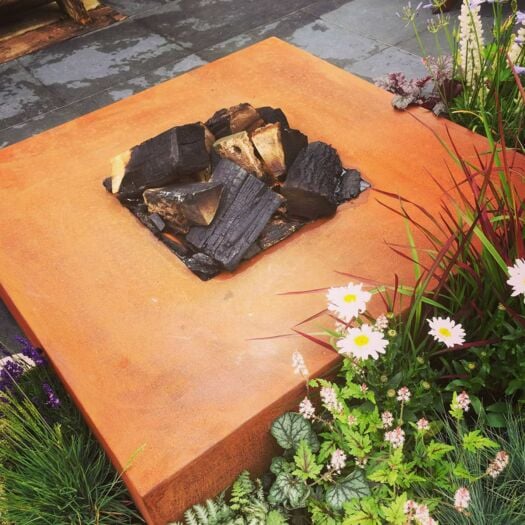 |
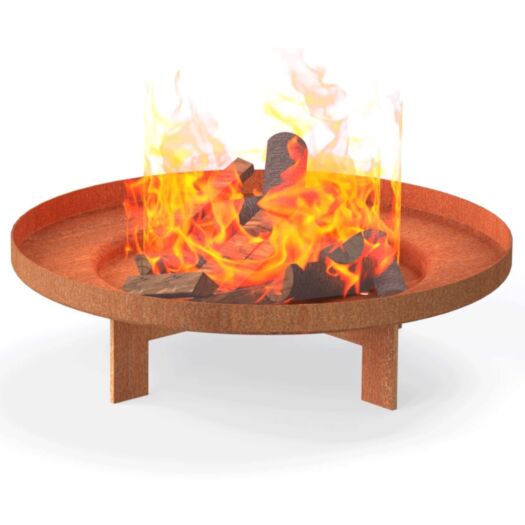 |
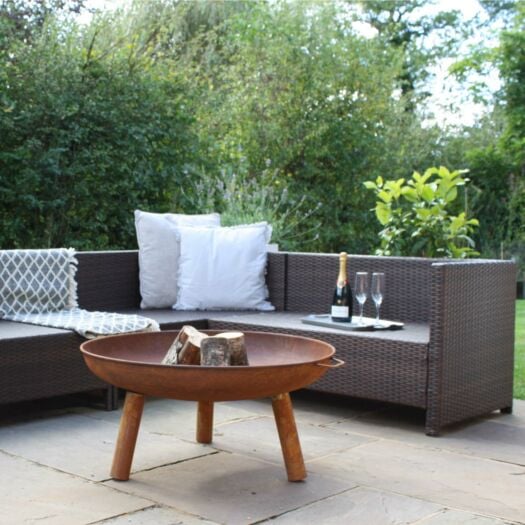 |
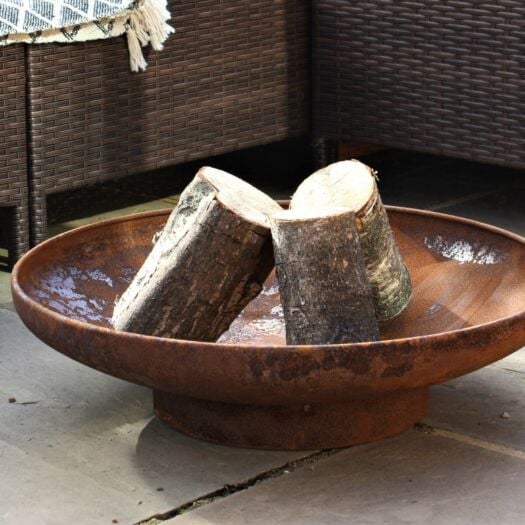 |
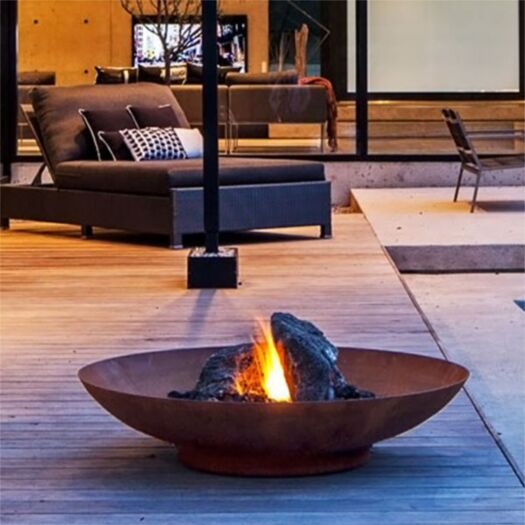 |
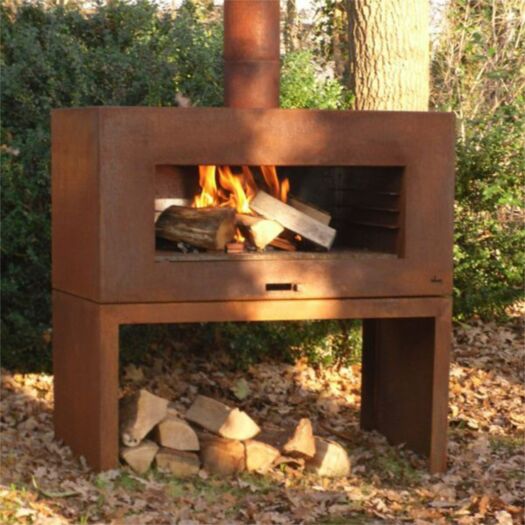 |
 |
Gas fires
An outdoor gas fire is an outdoor fire feature that uses gas as a fuel source to create flames and heat. Outdoor gas fires can take on various forms and attractive designs.
Gas fire features are typically fueled by propane or natural gas and can be ignited with the turn of a switch or the press of a button. They offer convenience and ease of use, as they do not require the preparation, lighting, and maintenance associated with traditional wood-burning fires.
Outdoor gas fires can be an excellent option for outdoor heating and creating ambiance in an outdoor living space. They are typically clean-burning, producing minimal smoke and soot, and can be safer and more environmentally friendly than wood-burning fires. Some gas fire features can also be equipped with additional features such as glass beads, lava rocks, or logs to enhance their visual appeal.
However, it's important to follow all safety guidelines and regulations when using an outdoor gas fire to minimize the risk of injury or property damage. It's also essential to ensure that the gas line and connections are properly installed and maintained by a qualified professional.
- Safer option if you have pets or young children
- Portable, so can be moved around the garden
- No smoke
- Turn on and off easily
- Holds up in the elements
- Provides ambiance
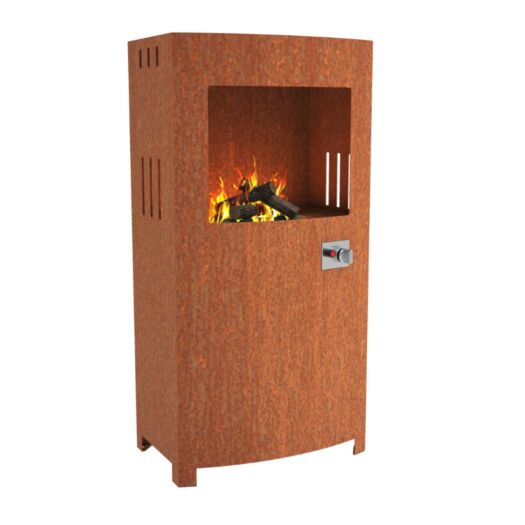 |
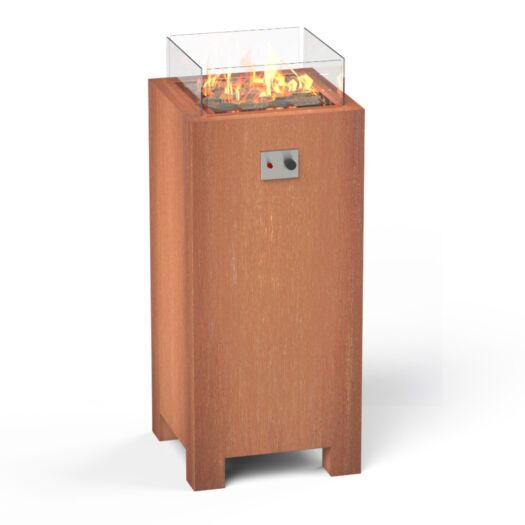 |
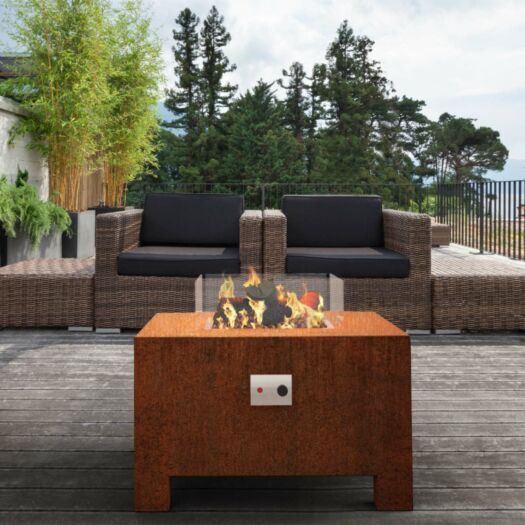 |
Pros and cons of gas and wood outdoor fires
Gas fire
Pros
-
- Clean burning
- Easy to turn on and off
- Environmentally friendly
- No maintenance whilst burning
- Less fire hazards from sparks
Cons
-
- More expensive to run
- Gas tank needed
- Less rustic
Wood fire
Pros
-
- More affordable
- Easier to install
- Eye catching
- More rustic experience
Cons
-
- Not clean burning
- More dangerous
- Take longer to light
- More maintenance
- Need regular cleaning
Safety
Whichever type of garden fire you decide to go for, remember to keep safety in mind! Take a look at our handy list below of things you can do to make every fire as safe as possible.
- Keep a bucket of sand or water nearby in case anything should get out of control.
- Make sure seating is a safe distance from the fire. Wood fires in particular can spit sparks, especially if the wood is damp/ unseasoned!
- Always check the wind direction before deciding where to sit. If it’s particularly windy, don’t use the fire.
- Remember to keep long hair tied back and be aware of dangly items of clothing.
- Store your seasoned logs away from the fire itself to avoid any stray sparks catching.
- Always ensure embers are no longer glowing before you leave the fire unattended.

